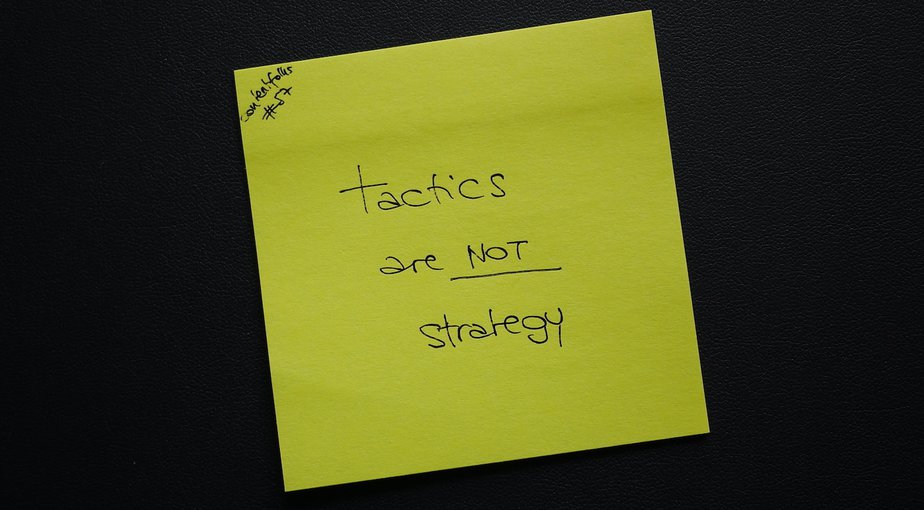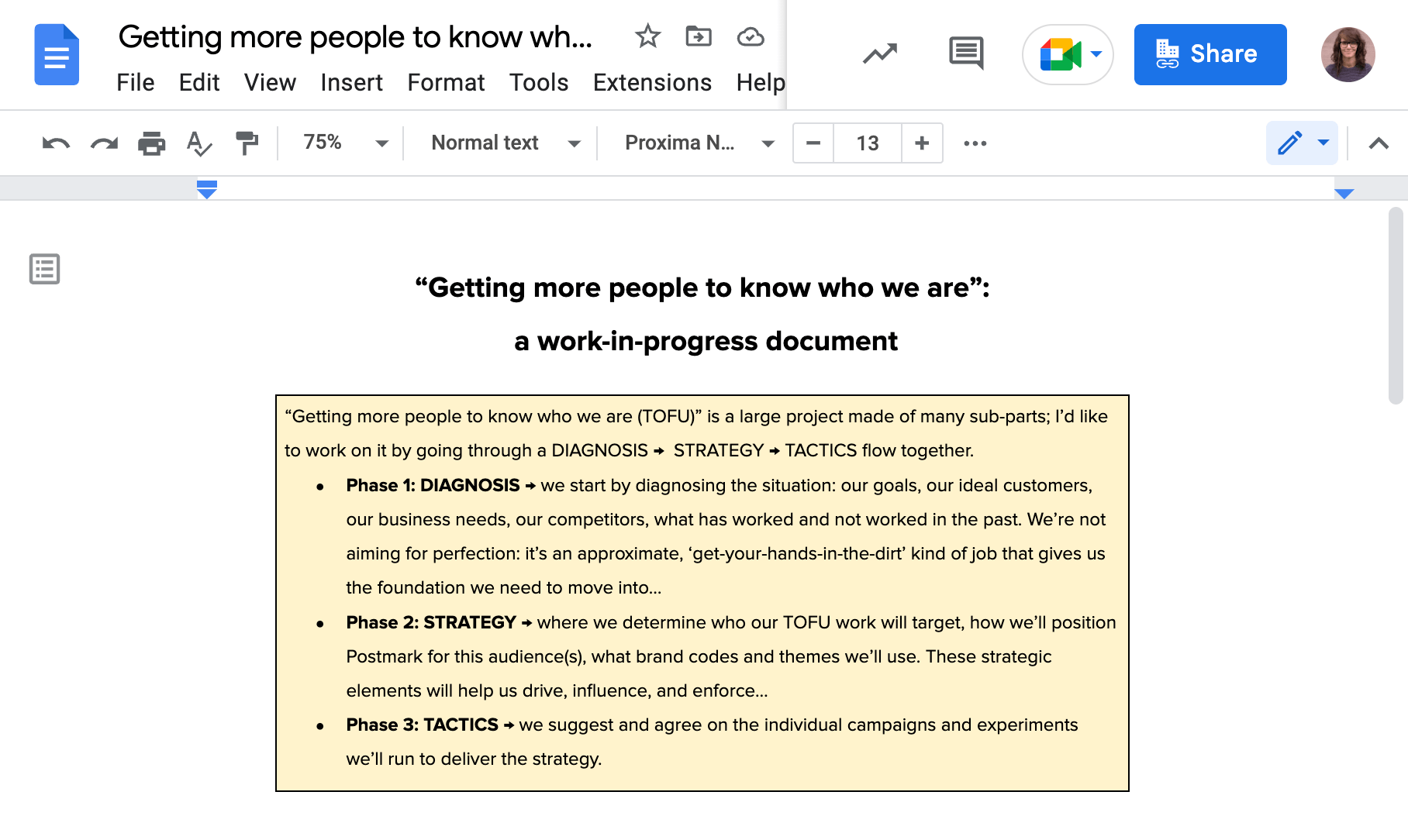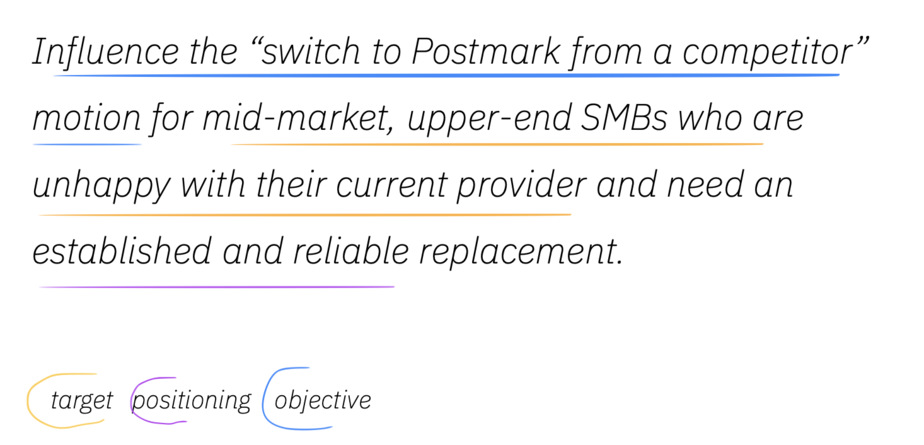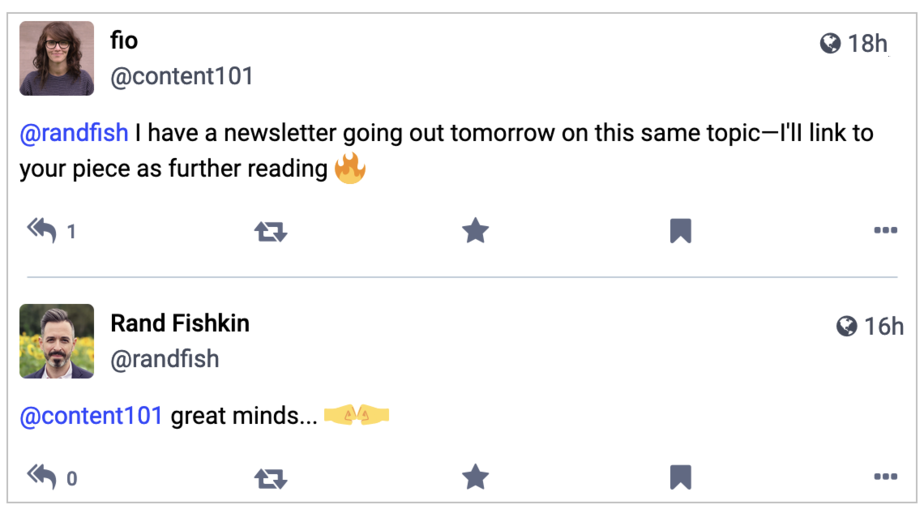
You are reading contentfolks—a fortnightly blend of sticky notes, big content ideas, and small practical examples. Thank you for being here! ~fio
Hey there 👋
How’s January treating you so far?
Aside from discovering perhaps the greatest podcast of all time, I’ve been busy working on Postmark’s brand strategy and deciding how to tackle this challenge: “Get more people to know who we are.”
Today I’m sharing our approach in case you need to drive or contribute to any strategic initiatives, both content-related and not, this year. But I’m also doing it because I see a lot of folks who still confuse tactics with strategy when they talk about planning, and I wanted to say something about that.
The sledgehammer approach 🔨
Imagine being in charge of a house renovation where your job is to make the kitchen brighter. You’d never take a sledgehammer and swing it wildly into the first available internal wall: you’d inspect the room layout, find your load-bearing walls, research lighting solutions, consult a few tradespeople, and so on, until you’d settle on the most effective way(s) to get the job done.
Marketing and brand work should follow a similar trajectory. Instead, when faced with goals like “Getting more people to do [x],” a lot of teams get excited and run for the sledgehammer, choosing their mode of execution—launch a podcast! get on TikTok! use ChatGPT somehow!—before thoroughly investigating the situation.
Just like a wild swing into a wall can compromise the structural integrity of a house, making tactical decisions without a strategy to back them up can compromise your chances of success. And in both cases, you might be left with a ton of mess to clean up.
Diagnosis → strategy → tactics
A tactics-first approach might lead to occasionally good results, but you might equally sink money, time, and resources into things that never really work. A better and more reliable way to guarantee long-term success is to follow an ordered diagnosis → strategy → tactics flow.
The DIAGNOSIS phase is where you diagnose the current situation of your brand and the challenges it faces.
It involves researching and understanding the brand’s history, its current customers, existing and ideal audiences, competitors and market landscape, business needs, beliefs, and what has worked (and not) in the past.The STRATEGY phase is where you take the information you just gathered, use it to find the best opportunities, and develop your strategic initiatives around them.
All good strategic initiatives should be clear about:
– Targeting, i.e. which customer segment you’ll target
– Positioning, i.e. how you’ll position the product/company for this audience
– Objectives, i.e. what you want this target segment to doThe TACTICS phase is where you pick the individual methods you’ll use to carry out your strategic initiatives.
That’s exactly the process we’ve been following at Postmark over the last two weeks, working together from a couple of giant work-in-progress documents.

Phase 1: diagnosis
Since different people on the same team will often have different insight into what a company is doing and for whom, the diagnosis phase is an excellent way to bring everyone on the same page.
At Postmark, I asked my marketing and product teammates to use all their data and historical knowledge and work asynchronously on 7 prompts:
Who are our ideal customers?
What are the most common customer journeys?
Who are we competing with, product- and content-wise?
Who is our target audience for brand work?
What content / marketing resonates the most with them?
Who are the influencers and amplifiers in our space?
What are the key business problems or use cases we solve as a provider?
After ~two days we shared our answers on a Zoom call, challenging each others’ assumptions and looking to data for extra guidance. It was an intense session, but we came out of it with a shared diagnosis of where we are—which helps us decide where to go next.
Phase 2: strategy
With the over-arching goal to “Get more people to know who we are” in mind, I went through our diagnosis notes, identified the most promising opportunities, and built three strategic initiatives around them. Here is one:

I gave the team a few days to share their feedback and objections. It was only at this point, that is: only after agreeing on our overall strategic direction, that we were ready to talk tactics.
Phase 3: Tactics
Now in full ‘what are we actually going to do?’ mode, I asked the team to add their tactical ideas to our document and tag them with #1, #2, or #3 to map them back to each strategic initiative. By the way, this is a great way to eliminate ultimately irrelevant tactics: no matter how brilliant, creative, or fun an idea is, if it doesn’t refer back to at least one of the strategic initiatives it doesn’t make the cut.
I can’t tell you exactly where we will land, because we’re still in this phase until the end of the week. Will we start a webinar series? Improve our comparison pages? Send the Head of Postmark on a podcast tour? All of this (and more) is possible, but the point is: because we went through the diagnosis and strategy phases first, we are confident that whatever we do will help us progress towards our goal instead of being a random act of marketing.
So that’s the end of our diagnosis → strategy → tactics flow. And here is a fun coincidence: just as I was putting my finishing touches to this newsletter, Rand Fishkin published a piece on the same topic.

Since there aren’t enough pieces that explore this tactics vs. strategy debate well, I recommend you read Rand’s piece next. My favourite sentence: “marketing is really fun and rewarding once you nail down the core process. And it’s often a giant waste of time if you don’t.”
Until next time,
